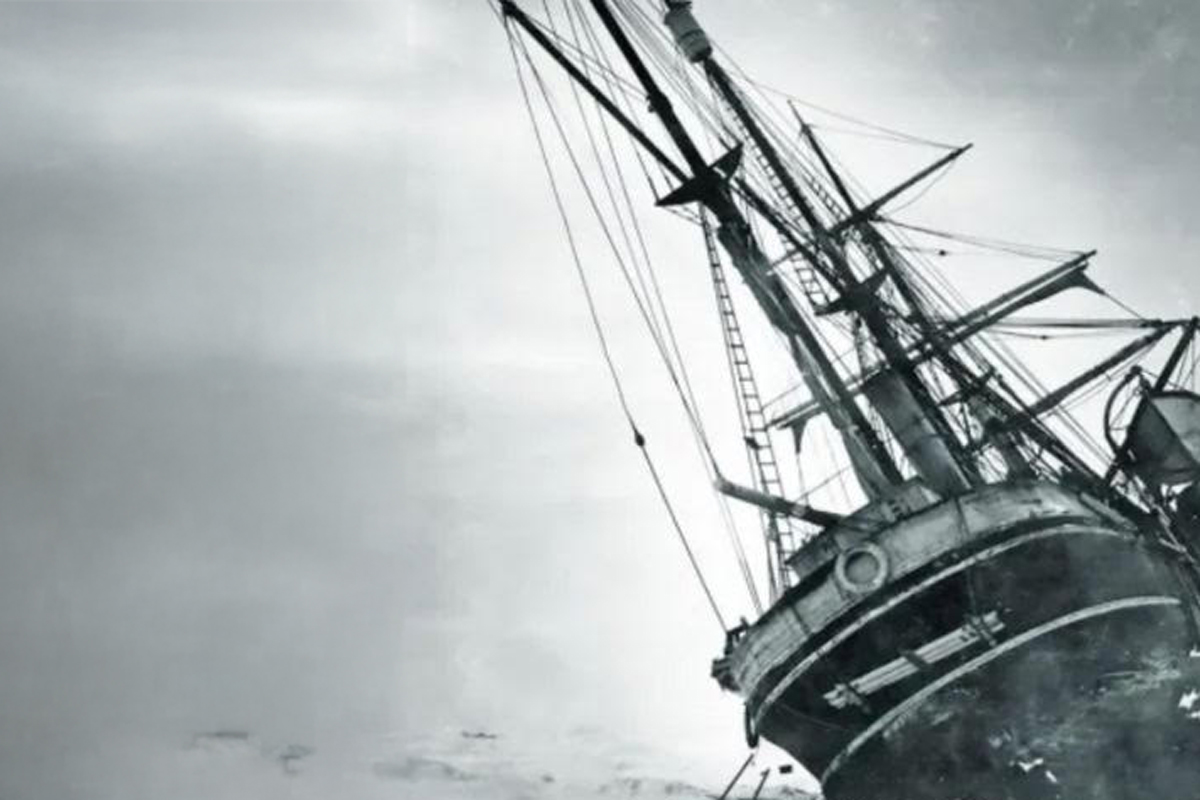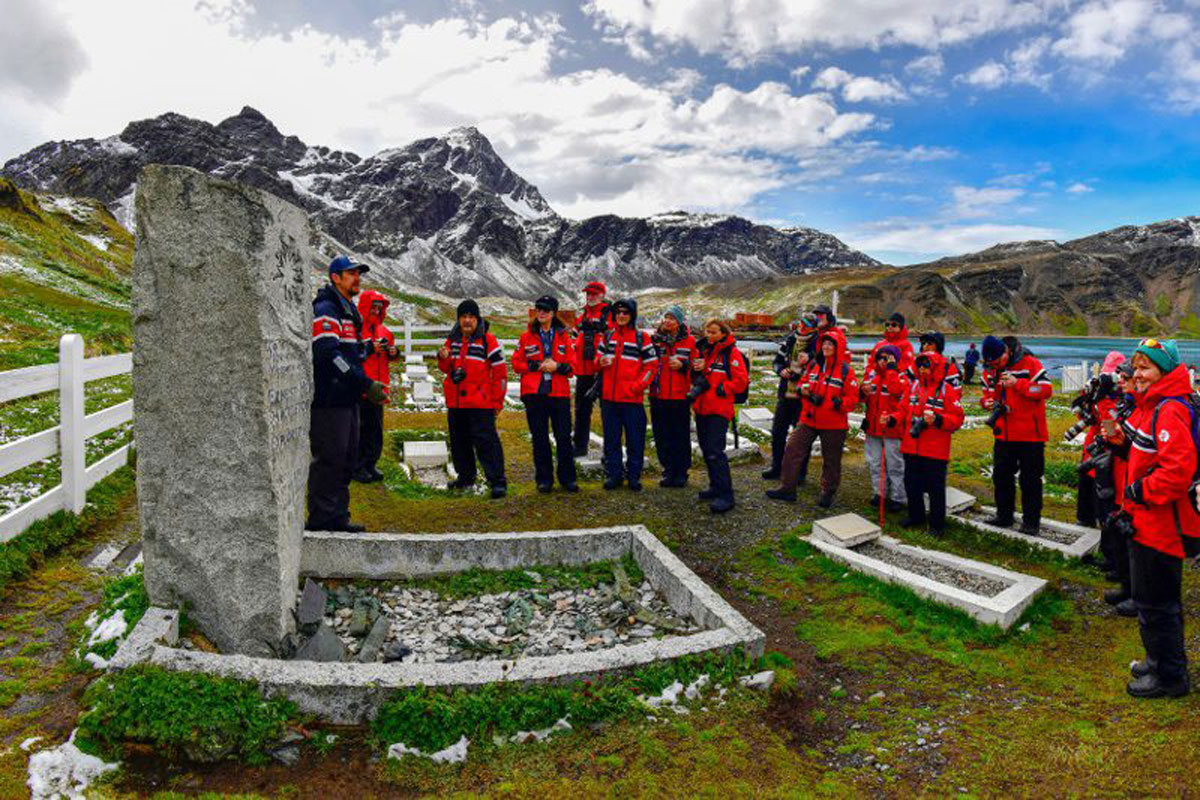The Incredible Journey of Sir Ernest Shackleton
Sir Ernest Shackleton. Known as the ‘Boss’, he is one of the most celebrated polar explorers in history. Shackleton’s name is forever linked with Antarctica, and his story is often referred to as ‘the most remarkable survival tale ever told’.

Polar Latitudes Expedition guests visiting Shackleton’s grave in South Georgia
Early Life and Ambitions
Shackleton was born on 15 February 1874 in Kilkea, Ireland, as the second of ten children. After finishing college, Shackleton joined the Mercantile Marine Service in 1890, despite his father’s wish for him to attend medical school. At just 19 years old, he was proudly promoted to First Mate, and remarkably, he achieved the position of Master Mariner only six years later. After participating in numerous expeditions and travelling extensively, a 1901 expedition led by explorer Robert Falcon Scott sparked his lifelong goal of being among the first to reach the South Pole.
The Ill-Fated Endurance Expedition
In 1911, Shackleton was deeply disappointed when a Norwegian team reached the South Pole before him. Despite this, he launched his third attempt at reaching the South Pole in 1914 aboard his famous ship, Endurance. The expedition quickly ran into challenges, and by January 1915, the ship was caught in ice.
For ten months, Endurance drifted with the pack ice. The increasing pressure of the ice caused a leak, leading to the difficult decision to abandon the vessel. Soon after, Endurance was crushed and sank into the Weddell Sea, remaining undiscovered until its remarkable discovery in March 2022.

The Endurance, trapped in pack ice
Survival Against All Odds
Isolated on a drifting pack of ice, the men marched westward to where they believed the nearest land was. Hauling their lifeboats across the frozen terrain, they were forced into the small crafts due to the thinning ice, camping on large ice floes to rest.
What kept the crew going is a tribute to Shackleton and his leadership. His talent for reading his men, understanding their emotions, and maintaining morale was extraordinary. After 497 days across rough, frozen seas, they reached land on Elephant Island, establishing their camp at a place they called Point Wild, after Frank Wild, who had scouted the location.
With no chance of rescue, supplies nearly depleted, and stranded far from civilisation and any chance of ship encounters, Shackleton recognised that rescue was unlikely and devised a plan. He led a mission with five of his crew to cross almost 800 miles of tumultuous seas to reach South Georgia, aiming to find an inhabited whaling station at Grytviken. The journey took 16 days across one of the stormiest stretches of ocean in the world, becoming what is one of the most astonishing small boat journeys in history.
Landing them on the southern side of their destination, their journey was not over. Shackleton and his crew members needed to cross the mountainous island to reach a whaling station on the northern side. This journey would be difficult for any seasoned mountaineer with proper gear, but Shackleton and his men had nothing and were forced to use nails in their boots as makeshift crampons. Against all odds, Shackleton and his men successfully reached the whaling station.
Resting for only three days, Shackleton and his men prepared the whaling boats to rescue the remaining crew members. Four months after leaving Elephant Island, and after four attempts to reach them, Shackleton and his expedition team were reunited. What is even more astonishing is that not a single member of Shackleton’s team was lost or perished.
The Final Journey and Legacy
In 1921, Shackleton returned to Antarctica to conduct research on the Quest, on which he collapsed from a suspected heart attack at the age of 47. Sir Ernest Shackleton was buried on South Georgia, his death marking the end of the ‘Heroic Age’ of Antarctic exploration. You can visit his gravesite, where his loyal second-in-command, Frank Wild, rests alongside him, on the island.
Though he may not have achieved his goal of crossing Antarctica via the South Pole, his story and legacy live on to this day.

A visit to Grytviken cemetary, where Shackleton and Frank Wild rest
Interested in following Shackleton’s footsteps?
Contact us for more details and to book your spot to one of our expeditions!
